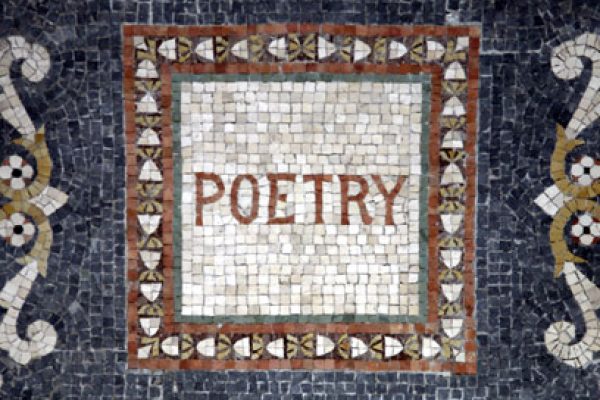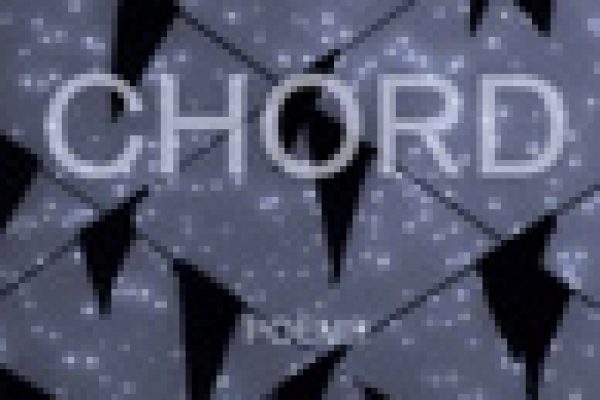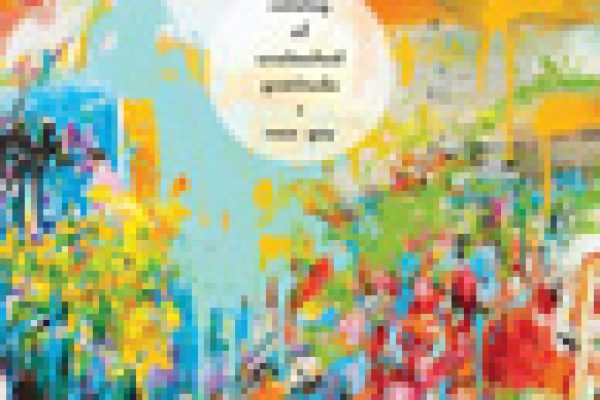The Culture of Spontaneity: Improvisation and the Arts in Postwar America
Daniel Belgrad
University of Chicago, $29
"Smart went crazy," Allen Ginsberg wrote in 1949. Detractors were eager to agree that the "culture of spontaneity" was a blind for neurotic misfits: the nihilist paint-dribbler, the nodding soloist, the sensation-addled writer who had "lost his eraser." Daniel Belgrad shows that for young artists coming out of the industrial indoctrination of the War, or spit from its corporatized propaganda offices, the political was not only personal but physical. (Trumpeter Tony Frusella knew what he was talking about when he quit Charlie Barnet's big band, calling it "just like the army.") Having unearthed the institutional, intellectual, and personal linkages of the period that earn his book its broad title, Belgrad has gone on to write a compelling narrative, putting living flesh on shorthand intuitions that connect North Beach to Black Mountain College, Fenollosa to Pollock, Jackson Lears's No Place of Grace to Todd Gitlin's The Sixties. While film and photography would seem to deserve a chapter more than ceramics does (Robert Frank, amazingly, goes unmentioned), the latter's inclusion suggests an acute historical eye at work, finding the keynotes of an era in activities from which the vain gaze of the present has silently shifted.
–Joel Smith
On Television
Pierre Bourdieu
Translated by Priscilla Parkhurst Ferguson
The New Press, $18.95
How can one speak critically on television about television? Sociologist Pierre Bourdieu performs this difficult and paradoxical task with a certain uneasiness. The result, an essay based on a speech delivered a year ago on a French national program, tries to depict the "invisible mechanisms" structuring television and to analyze the homogenizing effects they have on journalism and subsequently on art, science, philosophy, and law. Bourdieu is sensitive to his problematic opportunity "to reach beyond the usual audience at the College de France," where he teaches. Written in an uncharacteristically plain style and at only 80 pages, On Television necessarily lacks the solid empirical support that has been a dominant feature of Bourdieu's other work-leaving his scrutiny in danger of being dismissed as mere polemic against the media. If this fate is to be avoided, American readers will have to consent to Bourdieu's own conception of his study "as an exchange within a larger debate."
–Carsten Schinko
The Last of the Savages
Jay McInerny
Vintage, $12 (paper)
A novel applying McInerny's glibness to a subject as hazardous as the decline of sixties-era idealism has the potential to be achingly awful, but The Last of the Savages is a triumph. A sensitive addition to the literature of "passing," of self-disguise, the novel traces the long friendship between Patrick Keane, a Boston Irishman turned pseudo-WASP, and his prep-school roommate Will Savage, a Faulknerian hero who fails to die a tragic death, going on instead to own a Motown-style record company. While the novel is broad in scope-covering the sixties through the nineties, prep school through professional life, losing some force, as life itself seems to, at the end of the sixties-its delight is in details: the cheese Patrick encounters at his first poetry reading, "neither presliced nor orange like the cheese of my youth"; an acquaintance whose "cruel, handsome face conveyed the impression of someone who engaged in duels over obscure breaches of honor"; and his father, who "rather than a duelist . . . looked like someone who had people killed by his subordinates." The narrative avoids merely disemboweling pretenders. Instead, nearly every character is profoundly ambivalent about identity-racial, social, sexual, or otherwise- and is treated with compassion. "I was more interested in joining the winners than wallowing with the losers," Patrick admits, in one of many rueful retrospections that make you almost hate him, until you realize how much he hates himself.
–Leora Bersohn
Winter Money
Andy Plattner
University of Georgia, $22.95
If the title hadn't already been taken by Sherwood Anderson, Andy Plattner could have called his first book Horses and Men. Of the ten stories in this collection (winner of the 1997 Flannery O'Connor Award for Short Fiction) nine connect to horses, racing, or betting in the first paragraph. Brought up in Kentucky horse country, Plattner is master of his subject. His finest stories are Andersonesque in another way too: they have a young male narrator, usually just out of high school, coming to tentative grips with the world through observing the moral relativism of his elders. This focus is sharp but quite narrow, and the pace quickens only when the stories have an element of suspense or a real maverick of a character. There are grooms and trainers and bookmakers aplenty, but it's the crazy woman who stuffs her house with other people's garbage, the corrupt, know-it-all cop, and the pot-smoking floozy that provide the swing and verve.
–Randall Curb
Graphic Design in the Mechanical Age: Selections from the Merrill C. Berman Collection
Deborah Rothschild, Ellen Lupton, and Dara Goldstein
Yale, $50
The look of the machine age was crafted in the design studio before machinery had been invented that could approximate it. For a poster advertising the 1924 film Kino Eye, Aleksandr Rodchenko employed crayon to mimic the continuous tonal range of photography, and hand-lettered a "machine" font of his own rather than use the old-fashioned scripts (ultimately based on handwriting) that were available on printers' blocks. A 1928 poster for a municipal pool in Germany seemingly depicts a muscled diver in midair, but a surviving production photograph shows that the swimsuited model was stretched out stiffly on a towel and "diving" into a rose bush, his clothes tossed behind him. This beautifully printed selection of 210 objects (on view now at Williams College, moving to the Cooper-Hewitt in February) forms the basis for intelligent essays on the dialectical evolutions of design and production, on the Dadaists' unwitting invention of modern promotionalism, and on the often conflicting commercial and political uses to which that exuberant visual language was turned. If today the diver and the rose-bush look like something out of Magritte, there is more than coincidence involved. Don't see the ensemble in a Fruitopia ad tomorrow? Look for it in Russian campaign posters next year.
–Joel Smith
Herb's Pajamas
Abigail Thomas
Algonquin, $17.95
A lonely hermit, a dead cobbler, a teenage runaway, and a 54-year-old virgin star in this new collection of poignant short stories set on New York's Upper West Side. In concise, deft prose, Thomas interweaves tales of ordinary people coping with urban malaise. The first piece describes Walter, a sci-fi writer, pondering the value of his existence after his wife walks out. After Walter is cheered up by Mexican rooftop singers, the narrative shifts to his troubled neighbor, Edith. An overweight, sexually frustrated woman, Edith's unusual antics include pocketing her dying mother's jewelry and leaving flowers in the trash for a homeless woman. As Edith and Walter come to grips with their loneliness, the chaotic New York milieu is a vital force invigorating their lives. After a 14-year old runs away in search of her older sister in the penultimate story, the collection ends with an adulteress struggling to move her dead lover's body, still clad in her husband's pajamas. In portraying each of her four characters, Thomas captures the
subtle details of city life with elegance, flair, wit, and comic timing.
subtle details of city life with elegance, flair, wit, and comic timing.
–Jeremy Caplan
China's Avant-Garde Fiction: An Anthology
Edited by Jing Wang
Translated by Eva Shan Chou, Victor Mair, et al.
Duke, $17.95 (paper)
In her introduction, editor Jing Wang proposes that writers in China today "could turn an impervious back to sociopolitical consciousness" in favor of "a postrevolutionary literary sensibility obsessed with form and the pleasures of storytelling." The stories here provide both examples of and exceptions to this grandly stated scheme. Yu Hua's violent allegory "1986" paints a grimly detailed miniature of moral disintegration in the economically dynamic China ruled by Deng Xiaoping. Ma Yuan's stories "More Ways than One to Make a Kite" and "A Wandering Spirit," while evoking the phantasmagoric spiritscapes of late imperial fiction, also offer tentative clues to the human costs of Chinese colonialism in Tibet. Other stories suggest links to the world of (post)modernist literature in the West. Bei Cun's "The Big Drugstore" offers a Gothic vignette of a decaying, isolated rural community viewed from the perspective of a slightly unhinged youth. Ge Fei's stories, "Green Yellow" and "Whistling," play with textual fragments from classical Chinese literature with a kind of post-Joycean inventive energy. And Sun Ganlu's witty "I am a Young Drunkard" links minimalist prose with the anomie of urban youth and the imagery of a Taoist poet (think Borges as re-written by Kathy Acker, channeling Chuang-tzu at a Montmartre séance). "Avant-garde" or not, this selection makes a strong case for the vitality of contemporary Chinese literature.
–S. R. Shutt







